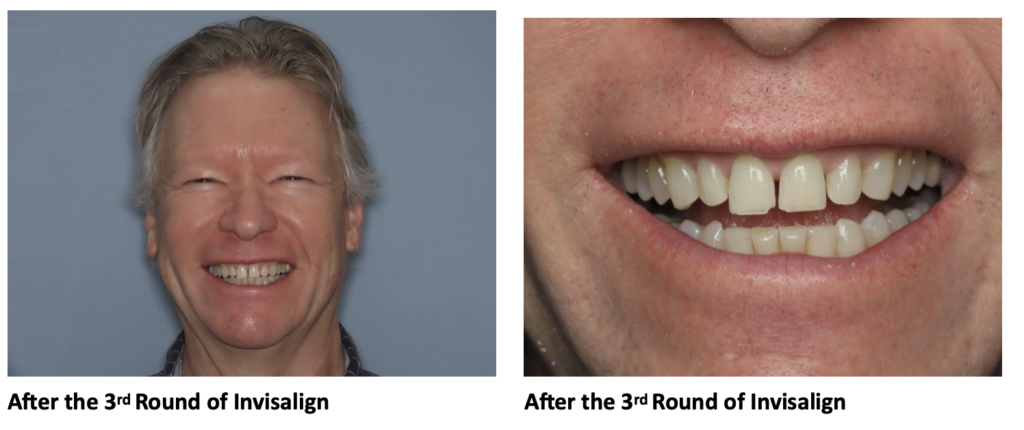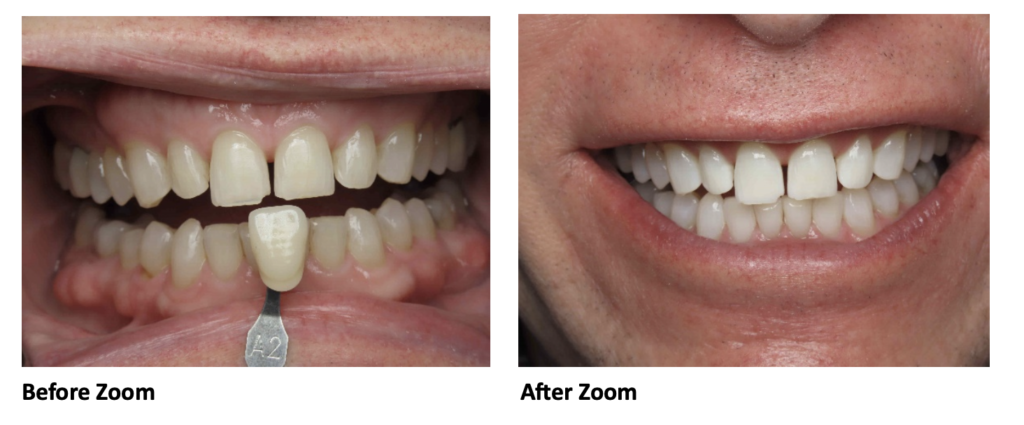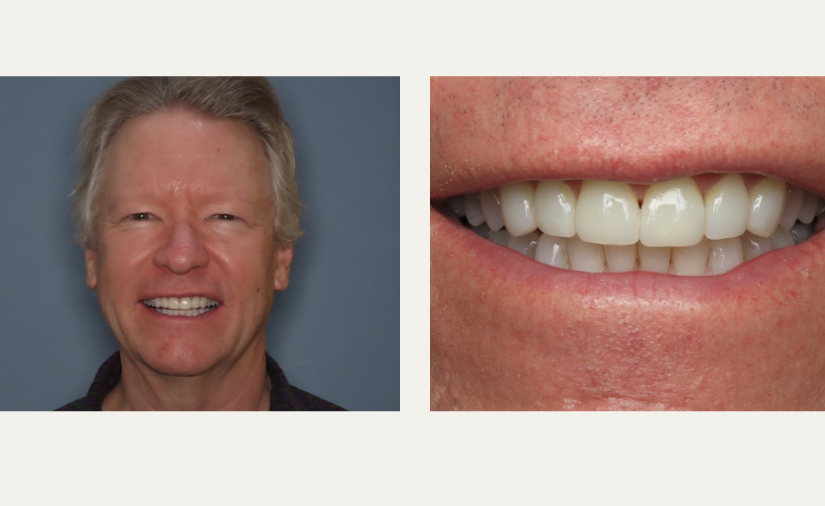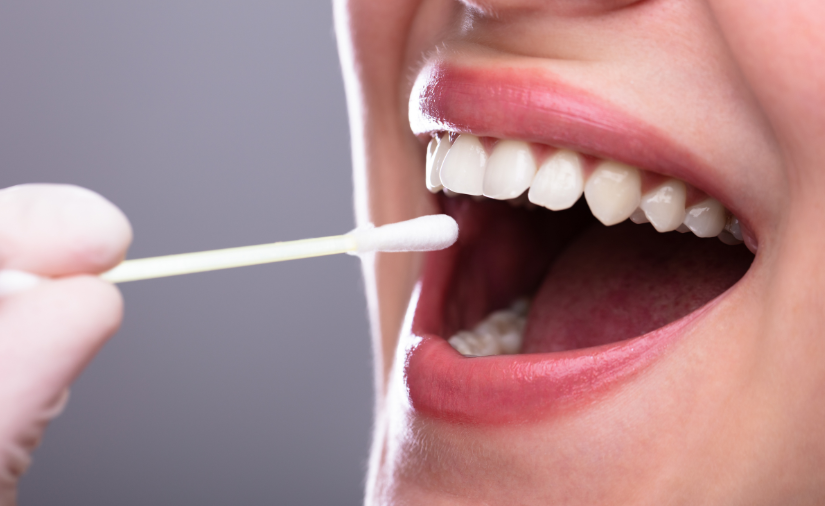By: Dr. Elizabeth Eggert
How did this start?
Steve came to us in 2020 and talked to us about how his bite never felt right after a new crown had been done at another dental office. Steve said that he even had undergone two rounds of Invisalign trying to make his bite feel normal again. He told us he chose our office because he researched and found that Dr. Elizabeth Eggert had the experience he was looking for in regard to helping people feel better about their bites. He told us, “I am not happy with my bite and I really just want my jaw to feel better.” He was not concerned cosmetically about his teeth, but wanted to be comfortable with his bite and to be able to eat again without feeling like he would break his teeth.

What was involved?
Steve underwent the Records Process and some interesting things were noted from the analysis. Dr. Elizabeth was able to obtain Steve’s pre-Invisalign records and noticed that he started with spaces between many of his front teeth.
 Pre-Initial Invisalign
Pre-Initial Invisalign
The analysis helped her find that Steve had a strained muscle and jaw position and therefore, it made sense for Steve to start his treatment with splint therapy to help find a consistent bite position for jaw and muscle comfort. The best appliance for Steve was an Anterior Deprogrammer to help his muscles release and decrease pressure and stress on his functional system. After splint therapy, it was clear that Steve’s bite had unevenly high points and his body seemed to crave more space in his mouth because his lower jaw wanted to be forward from where it was. It was almost like he was “locked” into an uncomfortable position. Dr. Elizabeth suspected that because Steve’s first Invisalign treatments closed the spaces between his teeth, that a cascade of muscle imbalances followed for him.
She recommended that Steve undergo Invisalign AGAIN in order to open the spaces back up and then restore his teeth to fill in the gaps.

Invisalign helped gain space back and Steve’s muscles were finally able to relax again, however his teeth still hit somewhat unevenly in the back. Therefore, equilibration was also completed for Steve to even out the bite forces on his teeth now that his muscles were in a calm position. After the 3rd round of Invisalign and the equilibration, Steve told us “My muscles feel REALLY GOOD!”
Before restoring his anterior teeth with porcelain veneers to fill in the gaps, Steve also wanted the rest of his teeth whiter. Steve completed the Zoom bleaching procedure and brightened up at least 5 shades!

What does Steve think?
Steve is very happy with the final results and said that during the procedure he did not have any worries.
“I think it was a good process and I didn’t have any sensitivity with my teeth.” He told us his muscles and bite feel much more stable and he no longer gets the feeling that he is going to break his teeth. He said “The timeline was good and it went by fast.” His family also likes the results, but Steve says “It really wasn’t about the cosmetic aspect for me, but it was worth it to have the stability in my bite!”
Congratulations Steve – your results are amazing! We are so happy we were able to get your bite back for you. This case was a fun puzzler for Dr. Elizabeth because she was able to figure out how important your “pre-condition” was to a future successful outcome! We appreciate you putting your trust in us!











